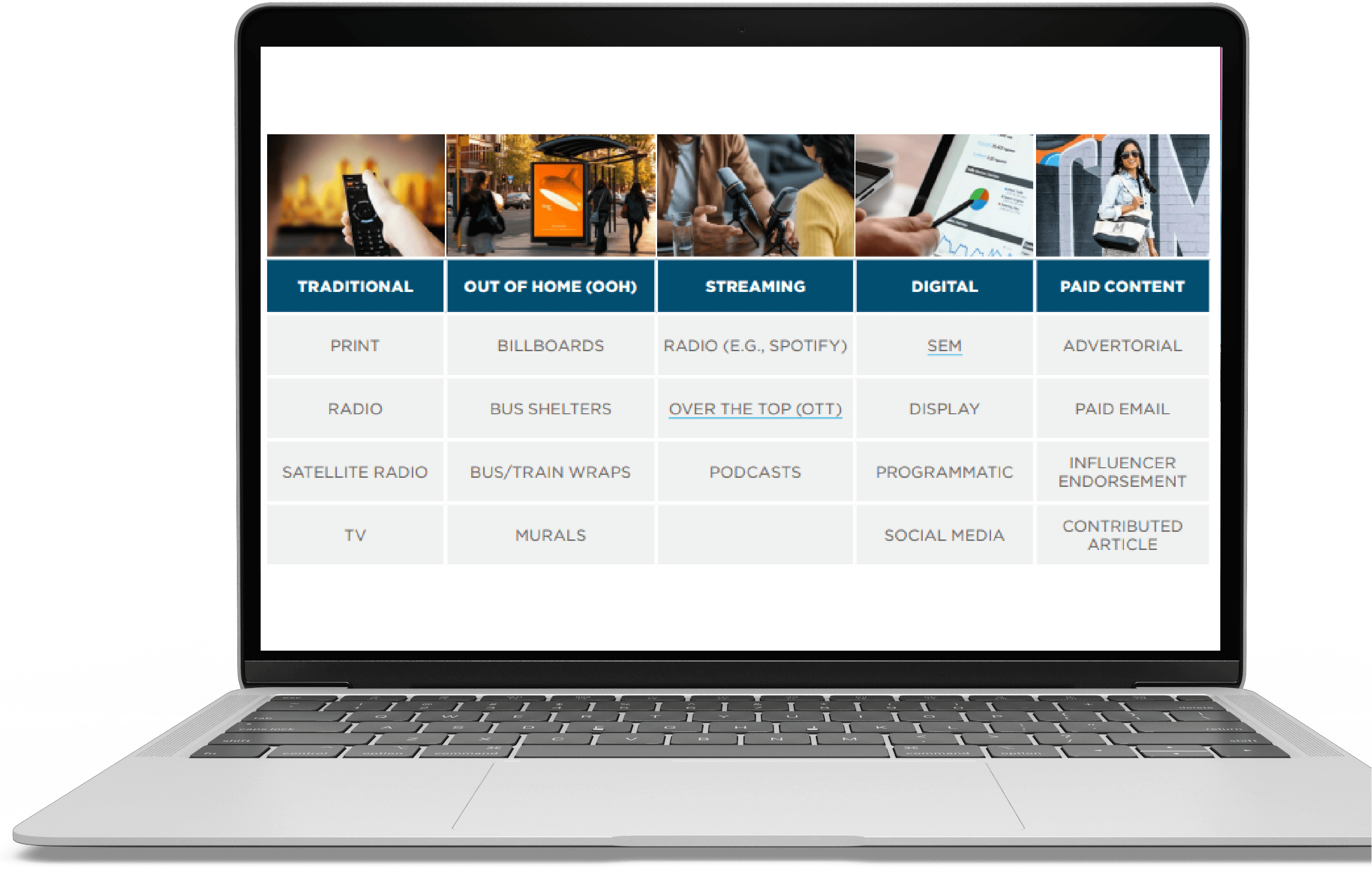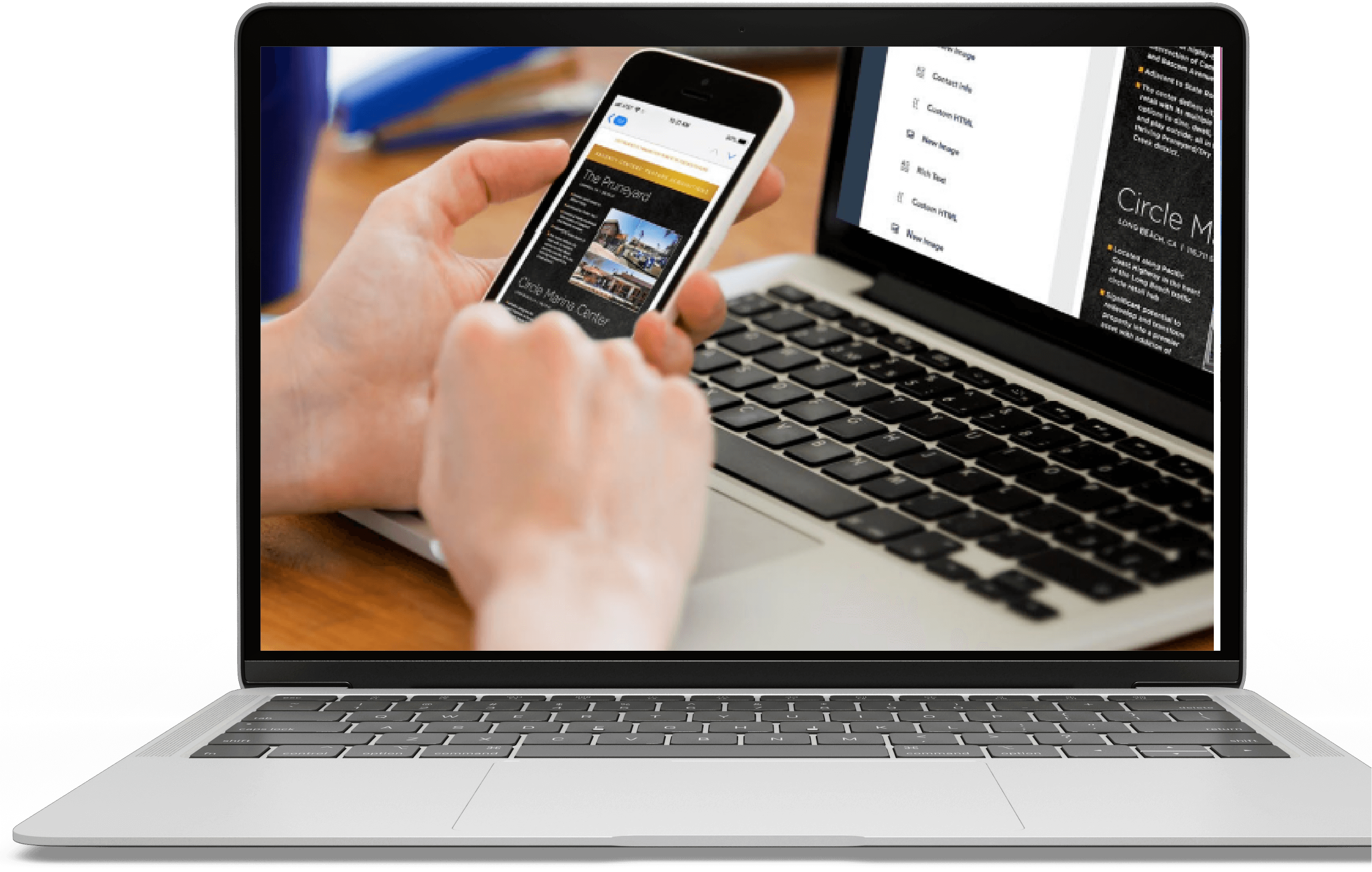Why is it important?
Paid strategies give you a lot more control than organic (or free) marketing strategies. Paid media allows you the ability to hand-select audiences, select run times and dates, and know how many people you are reaching, all with a controlled message — your message.
Where do I start?
The sea of paid media opportunities seems to be endless. The first step is understanding the paid media landscape. Below is a sampling of some of the most common media channels:
Traditional
- Print (Direct Mail, Magazines, Newspapers)
- Radio
- Satellite Radio
- TV
Out of Home (OOH)
- Billboard
- Bus Shelters
- Bus/Train Wraps
- Murals
Streaming
- Radio (e.g., Spotify)
- Over the Top (OTT)
- Podcasts
Digital
- SEM
- Display
- Programmatic
- Social Media
Paid Content
- Advertorial
- Paid Email
- Influencer Endorsement
- Contributed Article
Data Tracking Resources
Omnichannel marketing
Only consider paid media if you can budget for an omnichannel approach.
Traditional media channels generally have the highest price tag and are difficult to measure, but stand out by reaching a wider audience.
Digital media channels generally have the lowest price tag and are easier to measure, but can get lost among the other promotional messages online.
Buying paid media
If you plan to place a larger buy that crosses into multiple buying categories (traditional, digital, OOH, etc.), consider bringing on a media planner to help negotiate bundled buys.
When budgeting, a rule of thumb is that marketing should total approximately 6%-20% of your gross revenue. New companies skew higher on marketing spend (20%), while established companies skew lower (6%).
Frequency
Follow the “Rule of 7,” which claims a prospect needs to “hear” your message at least seven times before they’ll take action to buy your product or service.


